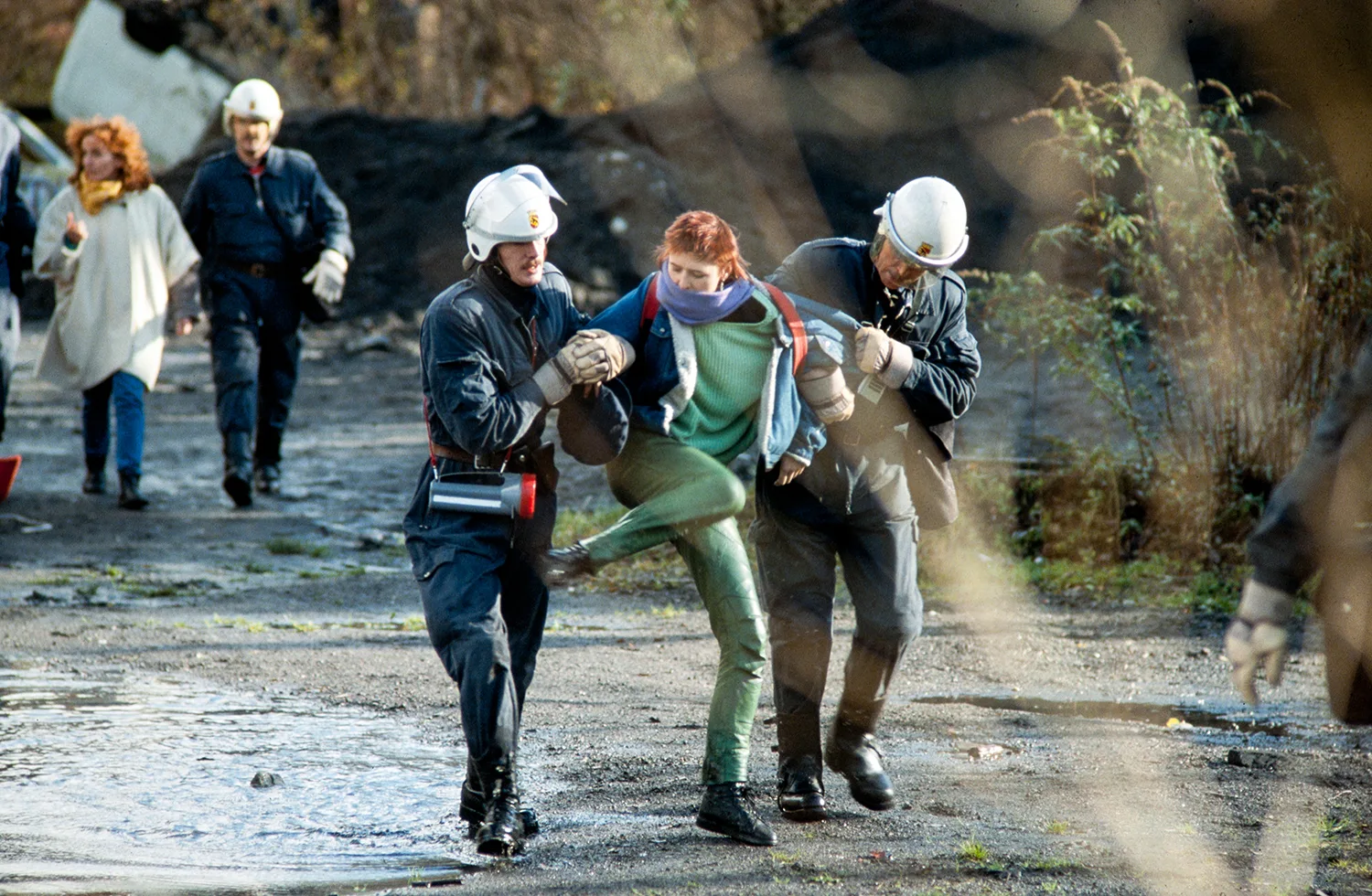
Swiss National Museum / ASL
The battle for Zaffaraya
There was a time before mobile phones, a time when press photographers were the eyes of an entire nation. Many of the images they captured are now forgotten. For example, the photographs of the forcible clearing of the ‘Free State of Zaffaraya’ in Bern.
Clashes between police and demonstrators were not uncommon during the youth riots of the 1980s. And always on hand to record the scene were the press photographers with their cameras – sometimes right in the thick of the action and sometimes, as here, operating at a safe distance. Viewing the explosive events through the leafless branches gives the scene a half-voyeuristic, half-revelatory feel: the media as seekers of spectacle, and the nation’s fourth estate.
The young people were looking for autonomy outside the structures of state control – in other words, freedom and space. However, the female activist in this picture is not granted any such thing – either ideologically or physically. Municipal police seized her on 17 November 1987 during the clearance of the ‘Free State of Zaffaraya’ on the site of the Bern gasworks, carting her away with a dozen other people. The activist aims a kick at the state powers. Whether the kick hit home or not, it doesn’t tell us – the photograph, the silent image.

A kick back against government strictures.
Swiss National Museum / ASL
But we do know one thing: the activist was not alone in her resistance. The 30 or so permanent residents of the village of tents and shacks were reinforced by sympathisers numbering many hundreds more. And after several missed ultimatums, nobody wanted to surrender tamely to the police onslaught at 11.30 in the morning. Rubber bullets and teargas were met with paving stones and paint bombs. All to no avail. The Zaffarayans were forced to admit defeat, leaving the occupied area through the rear exit.
Over the days following the forcible eviction, 10,000 Bernese took to the streets to express their outrage and demand greater acceptance for alternative cultural forms and ways of living. The marches through the federal capital resulted in the Reithalle riding arena being reopened as an autonomous centre. In 1989, the city offered the Zaffarayans a disused area of motorway in the Neufeld area of Bern, initially only temporarily for three to six months. In actual fact, it wasn’t until 2007 that they had to move to make way for the construction of a tunnel. Today, they live a few hundred metres to the northwest.
The age of rebellion is long over. If anything, the byword nowadays is restraint; potential adversaries shouldn’t even be alerted to the plan or put on their guard. In 2015, the Bern newspaper Der Bund likened Zaffaraya to a museum. It was described as ‘Ballenberg for lefties’, referencing the open-air museum of rural life in the Berner Oberland. Anyway – and hence the more positive wording – even today its mere existence still reminds us of the possibility of alternative life paths.

‘Weniger Ogi – mehr Zaff!’ (Less Ogi – more Zaff! – referencing Swiss politician Adolf Ogi). After the forcible eviction, ten of thousands marched through Bern’s old town in support of Zaffaraya and the Reitschule.
Swiss National Museum / ASL
The press photo agency ASL
Actualités Suisses Lausanne (ASL) was founded by Roland Schlaefli in 1954, and until its closure in 1999 was the leading press photo agency in western Switzerland. In 1973, Schlaefli also took over the archive of Agentur Presse Diffusion Lausanne (PDL), founded in 1937. The holdings of the two agencies comprise approximately six million images (negatives, prints, slides). In the broad range of subjects covered, there is a focus on federal politics, sport and western Switzerland. The agency opted not to take the step into the digital age. Since 2007, the archives of ASL and PDL have been held by the Swiss National Museum. The blog presents, in a loose chronology, images and photo sequences that particularly stood out when the collections were being recatalogued.



